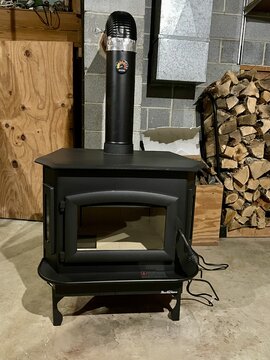I recently purchased a Buck 81. It's a nice stove, well built but when it's windy along with being cold, it just can't heat my 2400sq. ft home. The stove I had didn't have a problem plus I could bank it for overnight/workday burns and actually get useful heat where I can get long burns w/the 81, but not much heat. I was going to buy a Buck 91 but I have a 6" flu and the 91 has an 8" flu. My question is this, would I be able to use the Buck 91 w/a reducer? My chimney is 33' tall, drafts well and the stove is located in the basement in order to heat the whole house. I need to do something! Thanks for the advice!
Last edited:



